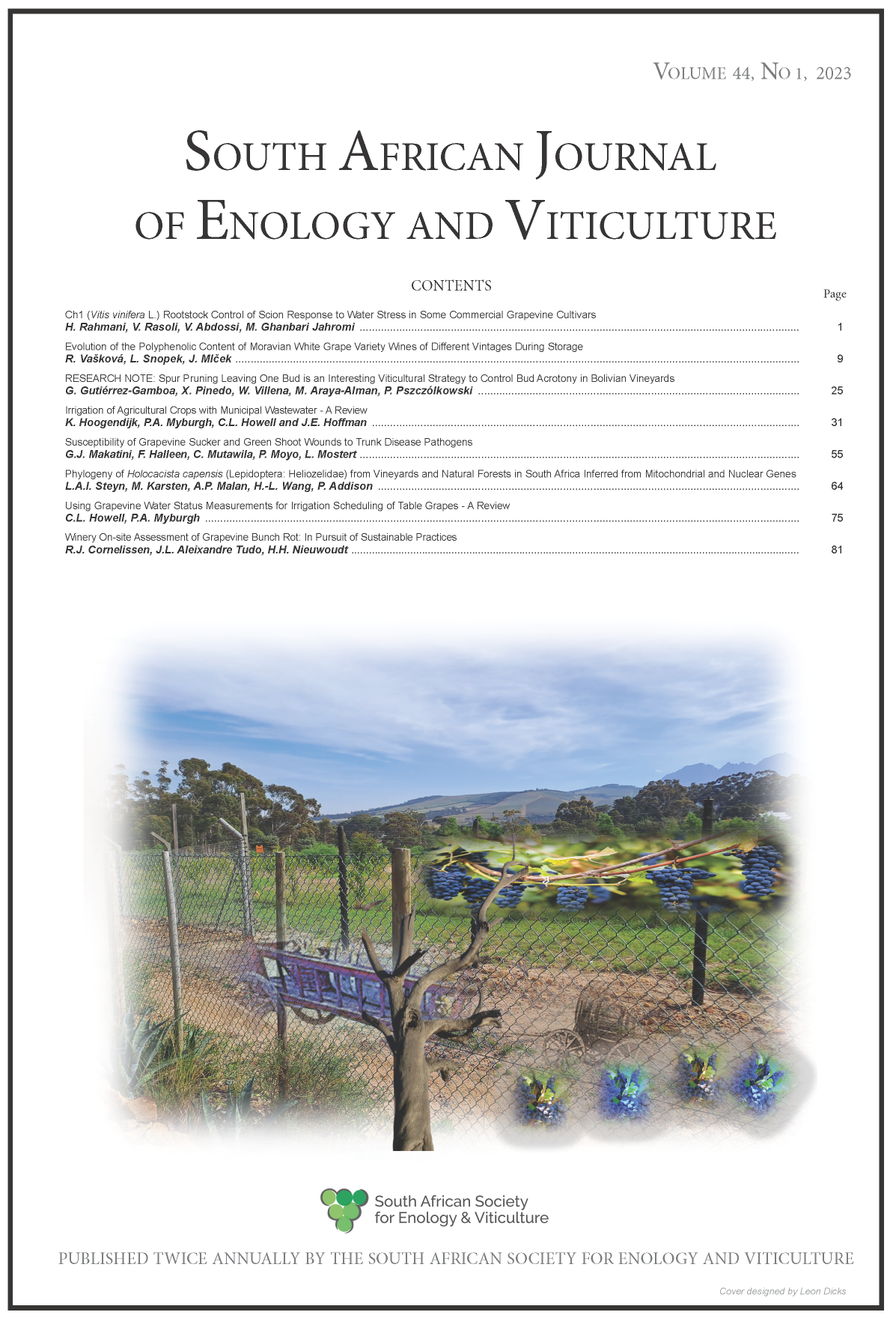Susceptibility of Grapevine Sucker and Green Shoot Wounds to Trunk Disease Pathogens
DOI:
https://doi.org/10.21548/44-1-5877Abstract
Grapevine trunk disease fungi infect vines through openings, primarily pruning wounds. The main objective of this study was to understand the role of sucker wounds and wounds made by the removal of green shoots from the stems of potted grapevines as potential points of infection for grapevine trunk disease pathogens. Six wine and four table grape vineyards of different ages were sampled in different
production areas in the Western Cape grape region of South Africa. Isolations were made from 161 sucker wounds, and fungal pathogens were identified using morphology and DNA sequence analysis of the internal transcribed spacers (ITS1 and ITS2) and the 5.8S ribosomal RNA gene, the translation elongation factor 1alpha or the partial β-tubulin gene. The results show that 62% of the sucker wounds were infected by trunk disease pathogens, including Diaporthe ampelina, Diplodia seriata, Phaeomoniella chlamydospora, Phaeoacremonium minimum, Eutypella microtheca, Cryptovalsa ampelina and Neofusicoccum australe. Diaporthe ampelina was the most common, followed by D. seriata and P. chlamydospora, in both the wine and table grape sucker wounds. Under glasshouse conditions, wounds made by the removal of young green shoots on one-year-old potted grapevine plants were inoculated with spore suspensions of D. ampelina, E. lata, N. parvum, P. minimum and P. chlamydospora. After four months, all the inoculated pathogens could be re-isolated. This study shows that grapevine sucker and green shoot wounds are susceptible to different grapevine trunk disease pathogens and may therefore play a role in the epidemiology of trunk diseases.
Downloads
Downloads
Published
Issue
Section
License
A copyright form will be e-mailed to the corresponding author when the manuscript has been accepted for publication.
In principle, the Author agrees to the following when he/she signes the copyright agreement:
I hereby assign to the SOUTH AFRICAN SOCIETY FOR ENOLOGY AND VITICULTURE (SASEV) the copyright of the text, tables, figures, supplementary material, illustrations and other information (the Material) submitted with the manuscript to be published in SOUTH AFRICAN JOURNAL OF ENOLOGY AND VITICULTURE (SAJEV) (the "Article"). The copyright becomes effective from the date the Article has been accepted for publication in SAJEV.
This is an open access journal, and the authors and journal should be properly acknowledged, when works are cited.
Author's may use the publishers version for teaching purposes, in books, theses, dissertations, conferences and conference papers.
A copy of the authors' publishers version may also be hosted on the following websites:
- Non-commercial personal webpage or blog.
- Institutional webpage.
- Authors Institutional Repository.
The following notice should accompany such a posting on the website: This is an electronic version of an article published in SAJEV, Volume XXX, number XXX, pages XXX - XXX, DOI. Authors should also supply a hyperlink to the original paper or indicate where the original paper (www.journals.ac.za/index.php/sajev/) may be found.
Authors publishers version, affiliated with the Stellenbosch University will be automatically deposited in the University's Institutional Repository SUNScholar.
Articles as a whole, may not be re-published with another journal.
The following license applies:
Attribution CC BY-NC-ND 4.0

